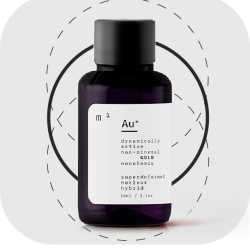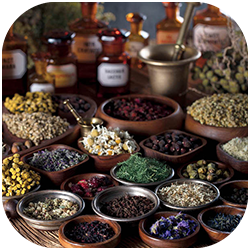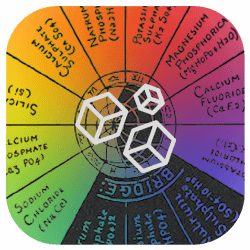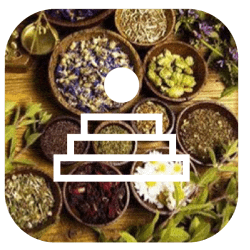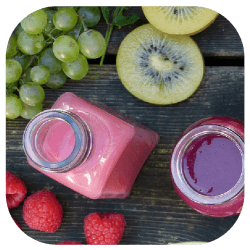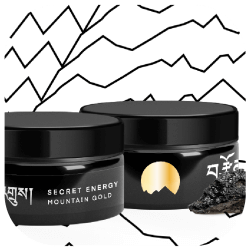Psychic Number 2 (MOON) Kapha
- Number 2 people have a mucous–dominated temperament (kapha), it’s natives are moody and easily susceptible to coughs, colds, skin diseases and heart ailments.
- For women they are especially fond of perfumes and prepare sweet dishes, cakes or pastries.
- The use of pearl powder(mukta pishthi) taken orally before going to bed is helpful.
- Number 2’s are prone to stomach and heart problems, avoiding constipating foods is key to their physical and mental well being.
- Morning walks and massages strengthen their immune system, incorporating physical exercise is important since their bodies are delicate.
- Their nervous system can be troubled by stress and strain, drink water from silver glass and meditate.
- On a full moon abstaining from speech and sleep is very helpful, having a weak digestive system they are prone to constipation, lack of appetite and indigestion.
- Due to their love of sweets and irregular eating habits it causes liver dis-orders. Colds, coughs and lung disorders are common due to their mucous dominated body.
- They should massage their bodies regularly, fenugreek seeds should be taken with soups and vegetables.
- Soaking peeled almonds overnight and using almond paste made by grinding on a stone tablet or blender is beneficial.
- Once a month they should do an inner purification, drinking only water with lemon.
- They should fast on Monday’s after sunset and avoid salt, spices, grains or any solid foods, they can incorporate purifying tea made from mint, dandelion and fenugreek or drink fresh juice(avoid canned or bottled juices)
- Fasting on Full Moon days is very beneficial for their psyche.
Kaphas should focus on eating more of the Pungent, Astringent, and Bitter tastes, ie: leafy greens, lentils, dried beans, pomegranates, potatoes, apples, and all digestive herbs and spices are good choices for you
Kapha season is from the coldest part of winter into spring. Elements of Water and Wood
Qualities to Reduce: cold, moist, heavy
Tastes to Maximize: bitter, pungent, astringent
The Pungent Taste .:. fire + air …is light, dry, and hot. This increases Pitta and Vata and decreases Kapha. Examples are chili peppers, ginger, and black pepper.
The Astringent Taste .:. earth + air …is dry and cool. This increases Vata and decreases Pitta and Kapha. Examples are most beans, cranberries, and pomegranates.
The Bitter Taste .:. air + ether …is light, dry, and cool. This increases Vata and decreases Pitta and Kapha. Examples are leafy greens and herbs such as goldenseal and turmeric.
Tastes to Minimize: sweet, sour, salty
The Sweet Taste .:. earth + water …is heavy, moist, and cool. This increases Kapha and decreases Vata and Pitta. Examples are nuts, grains, oils, meats, and most dairy.
The Sour Taste .:. fire + earth …is heavy, moist, and hot. This increases Pitta and Kapha and decreases Vata. Examples are pickles and fermented foods such as yogurt.
The Salty Taste .:. fire + water …is heavy, moist, and hot. This increases Pitta and Kapha and decreases Vata. Examples are sea salt, sea vegetables, and seafood.
Diet for kapha in Spring
The kapha diet in spring is all about reducing congestion and fluid build-up and will be of particular benefit to those who suffer with sinus congestion and heavy hay fever during the spring. This diet is most beneficial towards the end of winter and in the very early stages of spring:
- Eat only when hungry, allow the body plenty of time to properly digest its food
- Emphasize foods that are light, dry or warming to stimulate movement and heat
- Favor foods that are spicy, bitter or astringent to power through sticky congestion
- Reduce foods that are heavy, oily, cold, sweet, salty and sour. These are considered to be energetically ‘cooling’ for the body
- Avoids stimulants, dairy and highly fatty or processed foods.
- Herbs that help to reduce kapha include those that are considered slightly more stimulating and heating.
- Ginger – Warms the circulation and reinvigorates the mind
- Red Ginseng – Highly energising, reducing tiredness and fatigue
- Cinnamon – Warms the digestion
- Turmeric – Boosts circulation
- Green Tea – Boosts cognitive processes such as memory and concentration
Diet for kapha in summer
Increasing naturally bitter, drying and spicy foods will help heat up the digestion and remove any built-up cold and damp congestion from the winter months.
Dry spicy dry curries and warming stimulating herbal teas that include spices such as ginger, turmeric and cinnamon. Herbs that will boost the digestion such as fennel are also beneficial. Try and stay clear of cold, damp and refrigerated foods such as dairy products and raw foods.
Diet for kapha in Fall
The kapha diet is all about reducing congestion and fluid build-up. This diet is most beneficial towards the end of autumn and throughout the winter months.
- Eat only when hungry, allow the body plenty of time to properly digest its food
- Emphasize foods that are light, dry or warming to stimulate movement and heat
- Kaphas favor foods that are spicy, bitter or astringent to power through sticky congestion
- Reduce foods that are heavy, oily, cold, sweet, salty and sour. These are considered to be energetically ‘cooling’ for the body
- Avoids stimulants, dairy and highly fatty or processed foods
- Kapha should use supplemental herbs that help revive the digestion and keep cold and damp accumulations at bay
Diet for kapha in Winter
The key seasons at which a kapha is most at risk are the cooler, wetter months during winter and early spring.
The kapha diet is all about reducing congestion and fluid build-up. This diet is most beneficial towards the end of autumn and throughout the winter months.
- Eat only when hungry, allow the body plenty of time to properly digest its food
- Emphasize foods that are light, dry or warming to stimulate movement and heat
- Kapha favor foods that are spicy, bitter or astringent to power through sticky congestion
- Reduce foods that are heavy, oily, cold, sweet, salty and sour. These are considered to be energetically ‘cooling’ for the body
- Avoids stimulants, dairy and highly fatty or processed foods
- Kapha will benefit from more stimulating exercise that gets the blood flowing.
Kapha Food List
Grains
Toasted breads are very good, as they are drier.
Best:* amaranth, barley, basmati rice, buckwheat, corn flour, quinoa
Small Amounts:* millet, rye
Minimize:* oats, long and short grain rice
Dairy
It is best to use raw or organic and non-homogenized milk. Milk should be taken warm with a small amount of spices such as ginger and cardamom.
Best:* goat milk, skim milk, non-GMO soy milk
Small Amounts:* none
Minimize:* butter, buttermilk, cheese, cream, cottage cheese, ice cream, kefir, sour cream, yogurt
Sweeteners
Overuse of any sweetener will eventually cause an imbalance.
Best:* raw honey (that is more than six months old)
Small Amounts:* none
Minimize:* fructose, maple syrup, molasses, raw sugar, white and brown sugar
Nuts and Seeds
These should be eaten lightly dry-roasted to assist digestion and be only very lightly salted, if at all. Nut butters, except for peanut, may also be eaten.
Best:* pumpkin seeds, sunflower seeds
Small Amounts:* sesame seeds
Minimize:* almonds, Brazil nuts, cashews, coconut, filberts, lotus seeds, macadamia nuts, pecans, pistachio, peanuts, walnuts
Condiments
Condiments can be used to add one of the tastes to a meal or to balance out any heating or cooling qualities of a dish.
Best:* catsup, vinegar
Small Amounts:* none
Minimize:* mayonnaise, salt
Oils
Use all oils in small amounts only. Even the best oils, if overused, will aggravate kapha.
Best:* corn, flaxseed, mustard, safflower, soy, sunflower, ghee
Small Amounts:* none
Minimize:* almond, avocado, coconut, olive, peanut, sesame
Fruits
Dried and astringent fruits are typically best for Kaphas.
Best:* dried fruits as they are less sweet, apples, cherries, cranberries, grapefruit, pomegranate, prunes, raisins
Small Amounts:* apricots, lemon, lime, papaya, pineapple
Minimize:* sweet fruits, avocado, bananas, berries (raspberry, blackberry, blueberry, strawberry), cantaloupe, coconut, dates, figs, grapes, mango, melons, pineapple, oranges, peaches, pears, persimmons, plums, tangerines, watermelon
Vegetables
Vegetables are best eaten raw during the summer and cooked during the rest of the year as well as during times of digestive difficulty. In general, vegetables are good and even the “Minimize” group, if eaten in small amounts, will cause no harm.
Best:* alfalfa sprouts, artichoke, asparagus, green beans, bell peppers, broccoli, Brussels sprouts, cabbage, cauliflower, carrots, celery, chilies, cilantro, corn, kale, lettuce, and other leafy greens, mustard greens, onions, parsley, peas, hot peppers, potatoes, radish, seaweed, spinach, rutabagas/turnips
Small Amounts:* mushrooms, tomatoes
Minimize:* beets, cucumber, eggplant, okra, all squash, sweet potatoes, water chestnuts, zucchini
Meats
If you choose to eat meat, limit consumption to 2–3 times per week. Meat soups can be particularly nourishing during convalescence. Kapha individuals can thrive as vegetarians.
Best:* chicken or turkey (dark meat only), fresh water fish, rabbit
Small Amounts:* eggs
Minimize:* beef, duck, lamb, pork, seafood, shellfish, venison
Spices
When spicing, the overall spiciness is more important than individual spices. Even some “Minimize” spices can be used if balanced with other spices on the “Best” list. For kapha, food should be spiced hot and never bland.
Best:* anise, basil, bay leaf, black pepper, calamus, chamomile, caraway, cardamom, catnip, cayenne, cinnamon, cloves, coriander, cumin, dill, fennel, fenugreek, garlic, ginger, horseradish, hyssop, marjoram, mustard, nutmeg, oregano, peppermint, poppy seeds, rosemary, saffron, sage, spearmint, star anise, thyme, turmeric. Hot spices are best. Any spice not listed is probably fine.
Small Amounts:* none
Minimize:* salt
Legumes
Use legumes that have been soaked for as long as possible prior to cooking.
Best:* mung beans, red lentils, non-GMO soybeans (tofu and soy milk), split peas
Small Amounts:* aduki beans, black gram, black beans, fava beans, kidney beans, lima beans, pinto beans
Minimize:* black lentils, chickpeas
Beverages
These are best taken at room temperature or warm and never ice cold.
Best:* Two glasses of spring water per day in cool weather and three in hot weather unless doing extremely vigorous exercise and sweating. Herb teas (spicy and bitter), cranberry juice, green vegetable juices, wheat grass juice.
Small Amounts:* carbonated mineral water, coffee, tea
Minimize:* apple juice, carrot juice, orange juice, soft drinks
Avoid Always
avoid these foods: margarine, canola, GMO anything (ie: soy, corn, etc.), agave nectar, high fructose sweeteners, grapeseed oil, soda, CAFO meats
* “Best” Foods can be eaten without reservation on a daily basis. These foods are the most ideal ones as they are the most balanced for this dosha. Individuals who are sick should consume only the foods on this list.
* “Small Amounts” Foods can be eaten in small portions fairly often or in larger portions once or twice each week. Eating a wide variety of these foods is better than an abundance of just one. Overreliance on these foods can cause imbalance.
* “Minimize” Foods should be eaten only on rare occasions, ie: once each month. They can significantly disturb the dosha.
|
PREFER
|
AVOID OR REDUCE
|
|
FRUITS
apples
apricot
blueberries
cherries
cranberries
currants
figs (small amount)
grapefruit
grapes
guava
jackfruit
lemon
lime
longan
lycches
nectarines
papaya
passionfruit
peaches
pears
persimmons
pineapples
plums
prunes
pomegranate
rambutan
raspberries
strawberries
tamarind
|
FRUITS
avocado
bananas
cantaloupe
coconut
dates
honeydew
mangoes
oranges
prunes
raisins
watermelon
|
|
VEGETABLES
artichokes
asparagus
bamboo shoots
bean sprouth
beets
bell peppers
bitter melon
broccoli
brussel sprouts
cabbage
carrots
cauliflower
celery
chard
chili peppers
collard greens
corn
daikon
dandelion greens
eggplant
fennel
green beans
green chilies
horseradish
jerusalem artichokes
kale
kohlrabi
leeks
lettuce
mushrooms
mustard greens
okra
onions (cooked)
parsley
parsnips
peas
potatoes
radishes
rutabaga
seaweed
spinach
sprouts
tomatoes (cooked)
turnips
turnip greens
watercress
|
VEGETABLES
corn
cucumbers
olives
pumpkin
squash
sweet potatoes
tapioca
tomatoes (raw)
yams
zucchini
|
|
GRAINS AND LEGUMES
adzuki beans
amaranth
arrowroot
barley
barley
basmati rice
buckwheat
chickpeas
corn flour
couscous
durham flour
granola
jackbeans
kidney beans
lentils
lentils (black)
lima beans
millet
miso
mung beans
oat bran
oats (dry, small amounts)
polenta
quinoa
rye
split peas
tapioca
toasted bread
|
GRAINS AND LEGUMES
brown rice
corn
oatmeal
pasta
semolina
soy
sourdough bread
tempeh
tofu
wheat
white rice
whole wheat
wild rice
yeasted bread
|
|
DAIRY
buttermilk
lassi (small amounts)
skim milk
warm, spiced milk
|
DAIRY
butter
cheeses
cold milk
cream
ice cream
sour cream
yogurt
|
|
NUTS AND SEEDS
almonds (small amounts)
charoli nuts
chia seeds
flax seeds
pecans (small amounts)
pine nuts (small amounts)
pumpkin seeds
|
NUTS AND SEEDS
brazil nuts
cashew nuts
chestnuts
hazelnuts
macadamia
peanuts
pistachio nuts
poppy seeds
sunflower seeds
walnut
|
|
OILS
almond oil (small amounts)
flax seed oil (small amounts)
ghee (small amounts)
mustard oil (small amounts)
olive oil (small amounts)
pumpkin seeds oil (small amounts)
sesame oil (small amounts)
sunflower oil (small amounts)
|
OILS
avocado oil
canola oil
castor oil
coconut oil
corn oil
margarine
palm oil
peanut oil
safflower oil
soy oil
|
|
BEVERAGES
ajwan tea
aloe vera juice
anise tea
apple juice (diluted with water)
basil tea
blackberry juice (diluted with water)
borage tea
burdock tea
cardamom tea
carrot juice
chai
chamomile tea
chicory tea
chrysanthemum tea
cinnamon tea
cinnamon tea
clove tea
corn silk tea
cranberry juice (diluted with water)
dandelion tea
elderflower tea
eucalyptus tea
fennel tea
fennel tea
fenugreek tea
ginger tea
ginseng tea
grape juice (diluted with water)
hibiscus tea
hops tea
jasmine tea
juniper tea
lavender drinks
lavender tea
lemon balm tea
lemonade
lemongrass tea
nettle tea
peach juice (diluted with water)
pear juice (diluted with water)
peppermint tea
pomegranate juice (diluted with water)
raspberry tea
red clover tea
rose hip
saffron tea
sage tea
sage tea
strawberry leaf tea
thyme tea
turmeric milk
turmeric tea
violet tea
wheatgrass juice
wintergreen tea
yarrow tea
|
BEVERAGES
alcohol
almond milk
chocolate milk
cold drinks
comfrey tea
dairy drinks
licorice root tea
mango juice
marshmallow tea
melon juice
oat straw
shakes
smoothies
undiluted fruit juices
vanilla tea
watermelon juice
|
|
SWEETENERS
barley malt
honey (small amounts)
stevia
|
SWEETENERS
agave syrup
brown sugar
fructose
maple syrup
molasses
raw sugar
sucanat
sugar cane
white sugar
|
|
SPICES
ajwan
allspice
anise
asafoetida
basil
bay leaf
black pepper
caraway
cardamom
cayenne
cinnamon
cloves
coriander
cumin
dill
fennel
fenugreek
garam masala
garlic
ginger
marjoram
mustard seeds
oregano
paprika
parsley
peppermint
pippali (black pepper)
rosemary
saffron
sage
spearmint
tarragon
thyme
turmeric
wintergreen
|
SPICES
nutmeg
rose water
salt
vanilla
|




